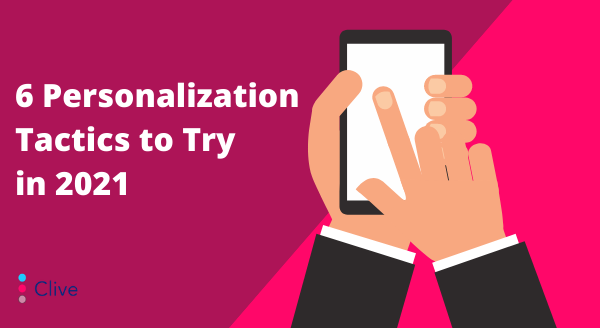
Digital personalization is undoubtedly one of the hottest and most-talked-about trends in Marketing and Communications. Today’s consumers believe that brands should deliver a targeted experience—and get frustrated with those that don’t.
It’s true that data-driven personalization requires time, strategy, and sophisticated tools. But there are certainly ways to “walk” before you “run” on your path to personalization. After all, according to AdWeek personalization can reduce acquisition costs by as much as 50%, lift revenues by 5-15%, and increase marketing spend efficiency by 10-30%.
“I know that personalization can deliver richer user experiences, but I don’t have the time / resources / tools / buy in to execute a campaign.”
If this sounds familiar, you are not alone. That’s why we’re presenting six personalization tactics to get the creative juices flowing and help you understand that it might be easier than you think.
Drive recruitment and attendance by showing visitors regionally-relevant events. Whether it’s an in-person event in their town or a virtual event with content relevant to their area, you can serve up targeted content based based on a visitor’s location.
Similarly, geolocation can be used to highlight nearby stores, office locations, shipping rates, and more, thus removing the need to enter a zip code or scroll through a list of options.
Setting up location-specific campaigns doesn’t require much strategy or data-provided insights. It’s truly a quick win you can use to test the waters of personalization.
If a visitor has navigated away from the homepage or other top-tier page to review a specific topic, it can be assumed they have an interest in that subject.
For example, if a prospective student traveled from the homepage, to your program finder, to the nursing school page, the likelihood they are interested in nursing as a field of study has increased. From there, you can use overlays or callouts to continually provide an easy way to navigate back to nursing-related information.
Again, like geolocation, setting up a pageview campaign does not require historical data collection, nor does it call upon information in your CRM. This technique requires a short setup time and can have a big impact by creating a better visitor journey and increasing time on site.
If a student or customer interacts with your team via form, automatically follow up with them via email and ask them to fill out an NPS survey. From there, reach out to promoters for a positive review, possibly incentivized by an offer or reward.
Furthermore, both the email and the survey you send out can be customized based on form responses. For example, if a person self identifies as a current student, you can ask them about their experience on campus. If someone identifies as a parent, you might ask them their thoughts about the value of their child’s experience with your school.
If your organization operates internationally or if welcoming international students is a goal, displaying content in a visitor’s native language is a meaningful gesture that can go a long way in relationship building.
For example, if your site has a testimonial section, you can swap out content to show both a headshot and quote from someone in a visitor’s country. And while (for now) this content will have to be translated in advance and shown only based on rules you define, it’s a great way to show that your organization works with individuals a visitor might better relate to.
It is possible to greet visitors based on their status or history with your brand without calling upon information stored in your CRM.
If it’s someone’s first time on your site, make them feel welcome with a greeting, special offer, or brand showcase to help them get to know you better. From there, ask visitors to self identify via form fill as prospective student, donor, or whatever makes sense for your business. Use this information to tailor your site to their journey. For example, existing customers might be looking for customer service, which you can highlight via callout.
When a visitor sees their name often, it makes your brand seem more human and increases feelings of connectedness. In today’s environment, no one wants to feel like a name on a list, or, even worse, completely anonymous. Mentioning their name in an email, as part of a welcome banner on your site, or during the checkout process can help you build one-to-one relationships.
If you’re ready for personalization but think it’s unrealistic for your business, we’re here to let you know that all you need to be personalization-ready is a bit of confidence and the motivation to move forward.
If you’d like to see how these campaigns can be built in Clive, please reach out to us for a guided tour of the product.
To review an actionable plan to get started with personalization, please review our recent blog post for step-by-step help for building your strategy.Last Updated: Dec 17, 2020 11:00 AM